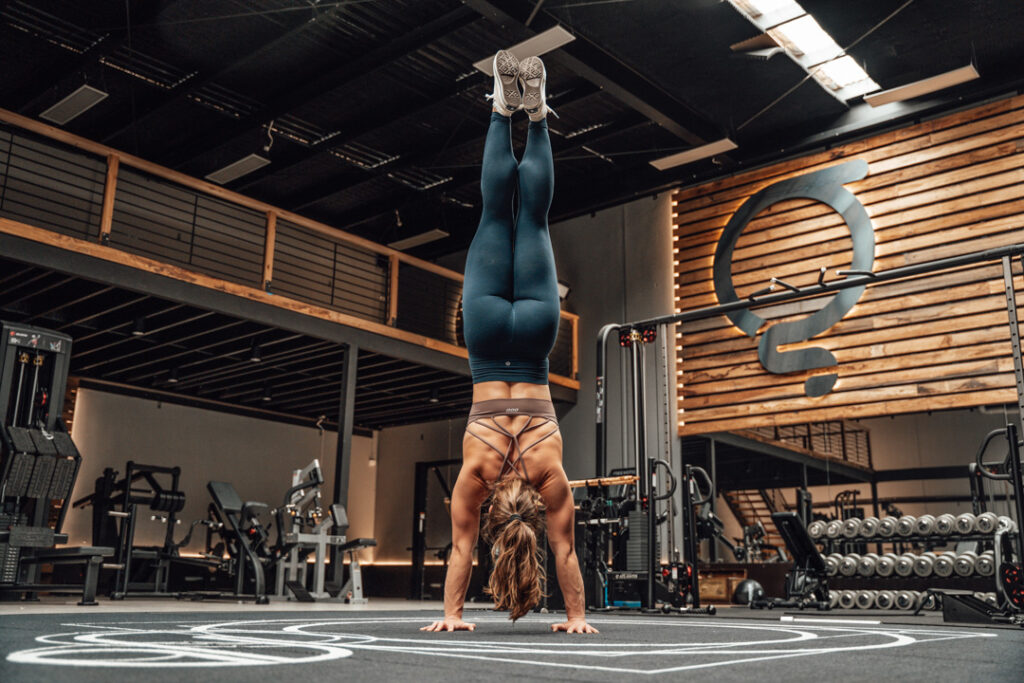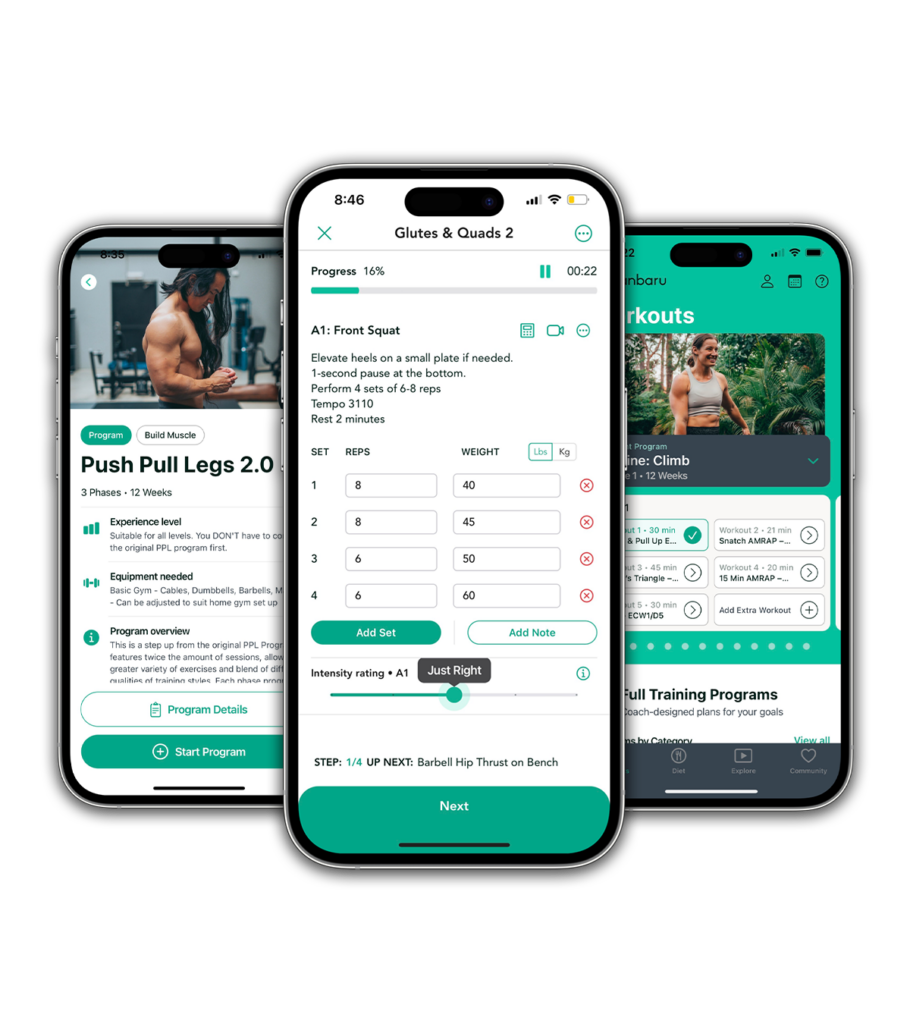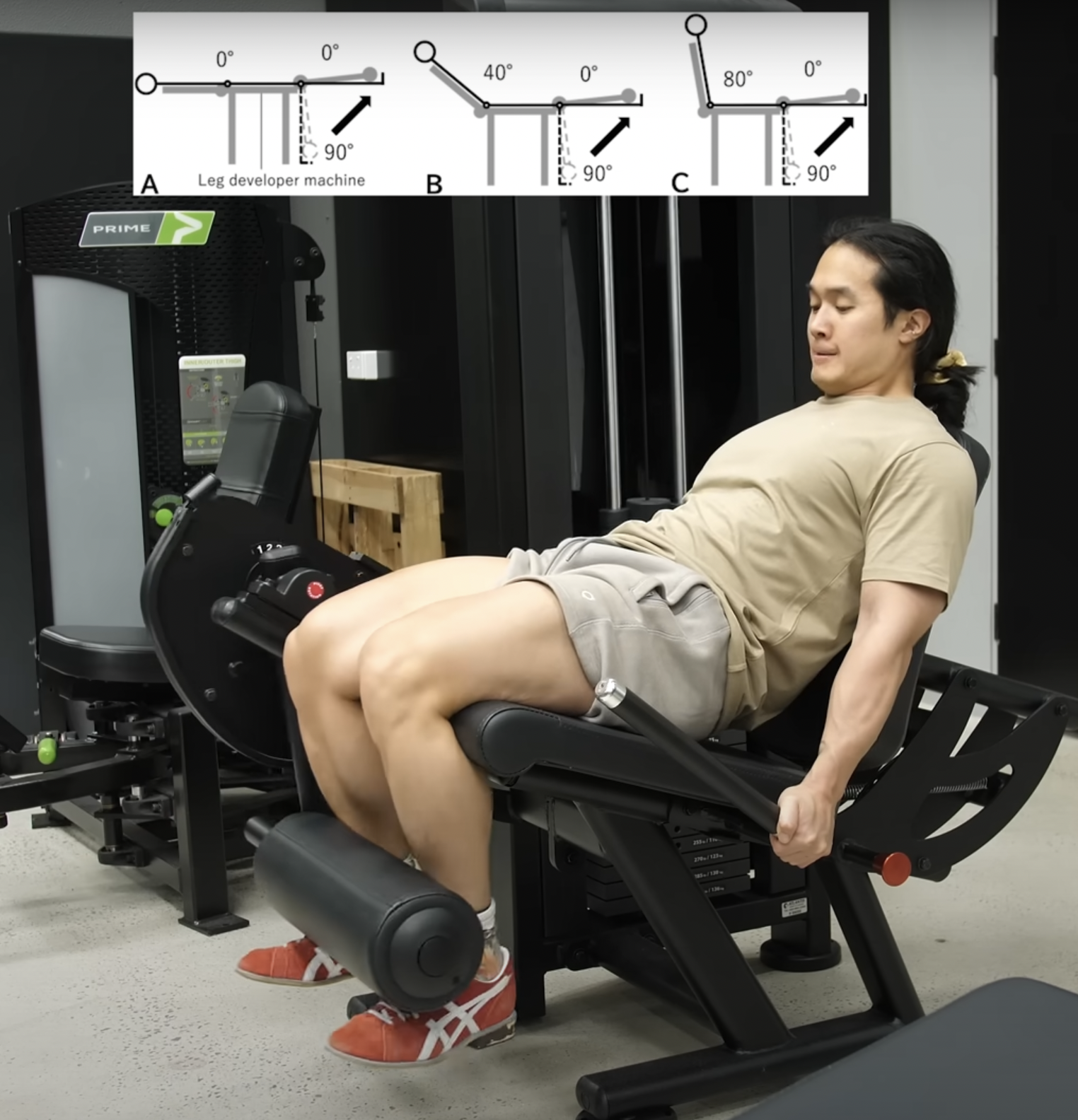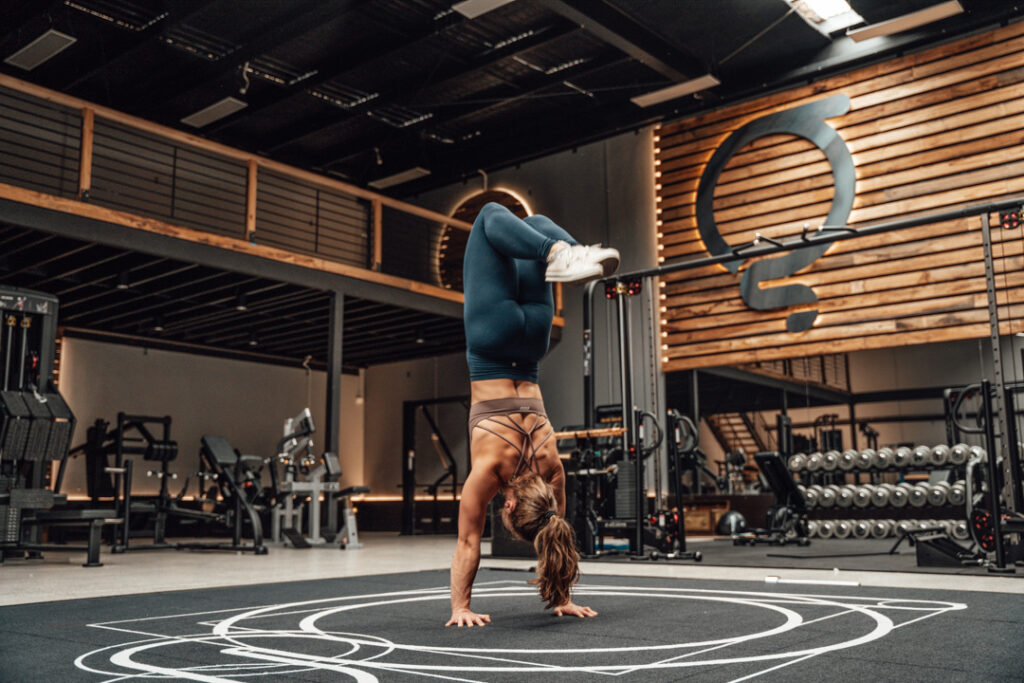
Bands are a great teaching tool because they really force the issue with stability. Unlike a wall or a box where you can leave your weight in it and somewhat cheat your way through a float, flutter or shift drill, the band will make your life really unpleasant if you lean into it and move around. This is great – it means you have to work to be present in your hands and only use the band if you start to lose balance.
For all of these exercises, you’ll need to place 1-2 heavy resistance bands in a squat rack in the j-hooks, high enough in the rack to catch your feet when you kick or climb up.
Handstand Flutter from Rack
What is it?
The hardest of the flutter drills, because the band will prevent you from resting into it.
Technique
Kick up to the band in the rack the same way you would to the wall. The band will flex as you arrive in it. If you’re too close, it will spit you back out the way you came, so make sure you are 1-2 hand distances away from the rack. Split your legs apart and shift your body weight over your hands until the band stops wobbling. Slowly switch the legs, keeping almost all your weight in your hands (you will have to balance!) and being as light in the legs as possible.
Common Mistakes
Leaving weight in the band and wobbling, or collapsing and relaxing into the shoulders and spine.
Handstand Flutter from Rack – Facing the Rack
Technique
Exactly as the one before, but facing toward the band. Climb into it by placing one foot on the upright of the squat rack then hooking the other foot into the rack.
Band in High Rack to Handstand Hold
What is it?
This is a bounce drill, so you’ll have to control the momentum as the band throws you forward.
Technique
Find your way into a handstand facing toward the band. Allow a small bounce into and out of the rack to take you into a handstand hold. Grip the ground to prevent overbalancing and try to hold the handstand briefly.
Handstand Bounce to Walk
What is it?
A more aggressive drill where you use the bounce of the band to create a challenge to control.
Technique
Kick slightly off the band, then allow the bounce to force you into an overbalance as you rebound. Step into your handstand walk from there.

Ready to workout?
Follow proven programs written by expert coaches, delivered in an easy-to-use app built by lifters, for lifters.





